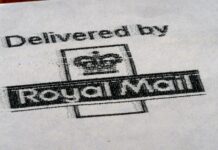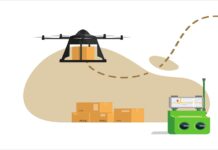Understanding Barcoding: Revolutionizing Business Accuracy and Efficiency
Understanding barcoding has become integral for businesses aiming to enhance inventory management, improve operational accuracy, and streamline processes. From retail to manufacturing, barcoding provides a reliable system for product identification and tracking, supporting efficient data-driven decision-making. This article explores barcoding fundamentals, how it functions, the different types, and the benefits it brings to businesses. Whether introducing barcoding or optimizing current practices, understanding barcoding is crucial for organizations to thrive in today’s competitive, data-centric landscape.
Defining Barcoding: How It Functions
Barcodes are everywhere—from goods in stores to identification cards and packages. Barcoding consists of sequences of bars and spaces that encode essential data, aiding in tracking items and simplifying inventory management. Typically, a barcode includes five core parts: a quiet zone, start character, data characters, a stop character, and another quiet zone. Knowing these elements is essential for understanding barcoding as each component plays a role in accurate and efficient data capture.
Core Elements of a Barcode
A barcode’s unique structure ensures accurate data capture and interpretation:
- Quiet Zone: This blank space around the barcode ensures that scanners correctly detect the start and end points.
- Start and Stop Characters: These markers indicate the barcode’s boundaries, facilitating omnidirectional scanning.
- Data Characters: These are the encoded information, such as product numbers, made up of various widths of bars and spaces.
- Check Digit: Common in many barcodes, the check digit serves as a mechanism to verify the accuracy of scanning.
- Human-Readable Text: The optional text above or below the barcode shows the encoded data, allowing manual entry if scanning is not possible.
Knowing these elements is key to understanding barcoding technology and resolving any scanning issues, ensuring it functions seamlessly across various environments.
How Barcode Technology Works
The barcoding process involves reading and translating data using scanners. Here’s a breakdown of how barcoding operates:
- Light Emission: Barcode scanners emit light, usually red LED or laser, onto the barcode.
- Reflection and Detection: Bars absorb light while spaces reflect it, and a photoelectric cell reads this pattern.
- Analog-to-Digital Conversion: The reflected light pattern is translated into an analog electrical signal and then digitized, producing a sequence of 1s and 0s.
- Data Decoding: The scanner’s internal algorithms decode this digital pattern into characters.
- Data Transmission: The decoded information is sent to a computer or POS system for use.
Advanced scanning technology, like omnidirectional scanners, CCD scanners, and image-based scanners, allows for various angles and processes damaged barcodes more efficiently. Mastering these aspects of understanding barcoding improves operational flow and accuracy.
Types of Barcodes and Their Uses
Barcodes fall into two main categories: 1D (linear) and 2D barcodes, each designed for specific needs and data capacities:
- 1D Barcodes: These consist of vertical lines and spaces with varying widths. Examples include:
- UPC (Universal Product Code): Used for retail product tracking.
- EAN (European Article Number): Commonly used internationally.
- Code 39: Used in multiple industries, allowing alphanumeric data.
- Code 128: High-density encoding of all ASCII characters.
- 2D Barcodes: These can store more data and use shapes like squares and dots, allowing scanning from any direction. Examples include:
- QR Codes: Often used for linking to websites or providing contact info.
- Data Matrix: Suitable for compact spaces on small items.
- PDF417: Used for identification cards and shipping labels due to its data storage capacity.
Selecting the appropriate barcode type ensures efficient data management and optimal performance in data-intensive applications, emphasizing the importance of understanding barcoding.
Barcoding Across Various Industries
Barcode technology has become a powerful tool across different industries, enhancing efficiency and accuracy:
- Retail: Barcodes streamline inventory tracking, prevent stock issues, accelerate checkout, and provide purchase trend data for targeted marketing.
- Healthcare: From patient identification to medication verification, barcodes support safety and efficiency. They also aid in equipment tracking and specimen management for accurate testing.
- Logistics and Supply Chain: Barcodes are essential for real-time shipment tracking, warehouse organization, and compliance with customs regulations.
- Manufacturing: Barcodes track production stages, aid in quality control, and manage inventory, ensuring manufacturing processes are streamlined.
- Additional Sectors: Libraries, agriculture, and hospitality also leverage barcoding for tasks like cataloging, tracking livestock, and managing event entry.
The versatility of barcode applications emphasizes how understanding barcoding can benefit multiple sectors, improving accuracy and data management.
Key Benefits of Barcoding for Businesses
Adopting barcode systems offers organizations several benefits, from data accuracy to cost savings. Here are seven major advantages of barcoding:
- Enhanced Accuracy: Barcoding reduces human error significantly, with an error rate of 1 in 36 trillion compared to manual entry’s 1 in 300. This precision supports reliable inventory management and data-driven decision-making.
- Real-Time Data Access: Barcoding allows instant data processing, providing accurate inventory updates and customer service data, which benefits supply chain efficiency.
- Cost Efficiency: Although barcoding requires initial investment, it saves costs over time by reducing labor needs, optimizing inventory, and minimizing errors.
- Streamlined Training: Barcode systems are simple, allowing quick employee training and consistent processes across locations.
- Improved Traceability: Barcode technology supports tracking products through their lifecycle, aiding quality control and regulatory compliance.
- Customer Experience: Barcode scanning speeds up transactions, ensures accurate pricing, and enhances service by providing immediate data.
- Data-Driven Insights: The vast data gathered from barcoding supports sales trend analysis, customer behavior insights, and operational efficiency improvements.
These benefits demonstrate the power of understanding barcoding as a critical tool for businesses aiming to streamline processes, enhance customer experience, and make informed decisions.
Asset Tracking with Barcodes
In asset tracking, barcodes provide a reliable way to tag and monitor assets, essential for industries relying on mobile computing and real-time management. Barcode labels, scanners, and asset management software allow organizations to keep track of valuable assets, reducing the risk of loss. These tools enable precise tracking of items’ locations, maintenance records, and other vital data, showcasing how understanding barcoding improves asset control and management.
Conclusion: The Value of Understanding Barcoding in Modern Business
Understanding barcoding equips businesses with an essential tool for boosting accuracy, operational efficiency, and customer service. From inventory management to complex asset tracking, barcoding simplifies processes and enhances data visibility across diverse business functions. As technology advances, barcoding applications continue to expand, promising even greater efficiency and operational insights for organizations.
By adopting barcoding systems, businesses position themselves to meet the demands of a data-driven market, enjoying the benefits of streamlined workflows, improved accuracy, and actionable insights.

























